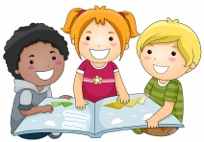The Communication Trust has recently produced four films to help parents encourage their children’s communication development.
http://www.thecommunicationtrust.org.uk/parents/films-for-parents.aspx
These short films (between 2 and 5 minutes) are based on material from last year’s national year of communication project ‘Hello’ and cover the age ranges birth to 6 months, 6 months to 1 year, 1 to 2 years and 2 to 3 years.
Narrated by Kathy Burke, the films present a unique perspective on communication through the eyes of a child and are full of useful advice about interacting and talking with young children.
Although the films have been made for parents, they provide a very useful resource for your learners. The material can be used to enhance learning in the classroom as well as helping to reinforce the links between theory and practical experience in placement.
With Communication and Language as one of the three prime areas in the Early Years Foundation Stage, there is a renewed emphasis on the importance of communication, particularly with the under three’s. This is a very important component of both the Level 2 Certificate and Level 3 Diploma for the Children and Young People’s Workforce. Particularly:
L2: Unit TDA 2.7 Maintain and Support Relationships with Children and Young People
Unit SHC 21 Introduction to Communication in Health, Social Care or Children’s and Young People’s Settings
L3: Unit CYP 3.5 Develop Positive Relationships with Children, Young People and Others Involved in their Care
Unit SHC 31 Promote Communication in Health, Social Care or Children’s and Young People’s Settings
Young learners often struggle to communicate effectively with babies and children and the fun approach presented through these films helps to break down embarrassing barriers and self-consciousness. Key themes from the films can be extended in class with group activities and discussions, which encourage learners to share examples from their placement experience. For example, how they can extend children’s vocabulary, ask open-ended questions and develop conversations using strategies like recasting and modelling. The four activities (attached) could be used alongside the film clips and learners could use this to help them generate evidence and prepare for practical assessment in the real work environment at different levels, for example:
L2: Unit SCH 21 (AC 2.2 and 3.2); Unit TDA 2.7 (AC 1.1 and 1.2)
L3: Unit SHC 31 (AC 2.3 and 3.3); Unit CYP 3.5 (AC 1.2 and 1.3)
Download the classroom activities for children’s speech and communication here.
Janet Stearns, Lecturer in Early Childhood Studies, former Lead Examiner for CACHE

